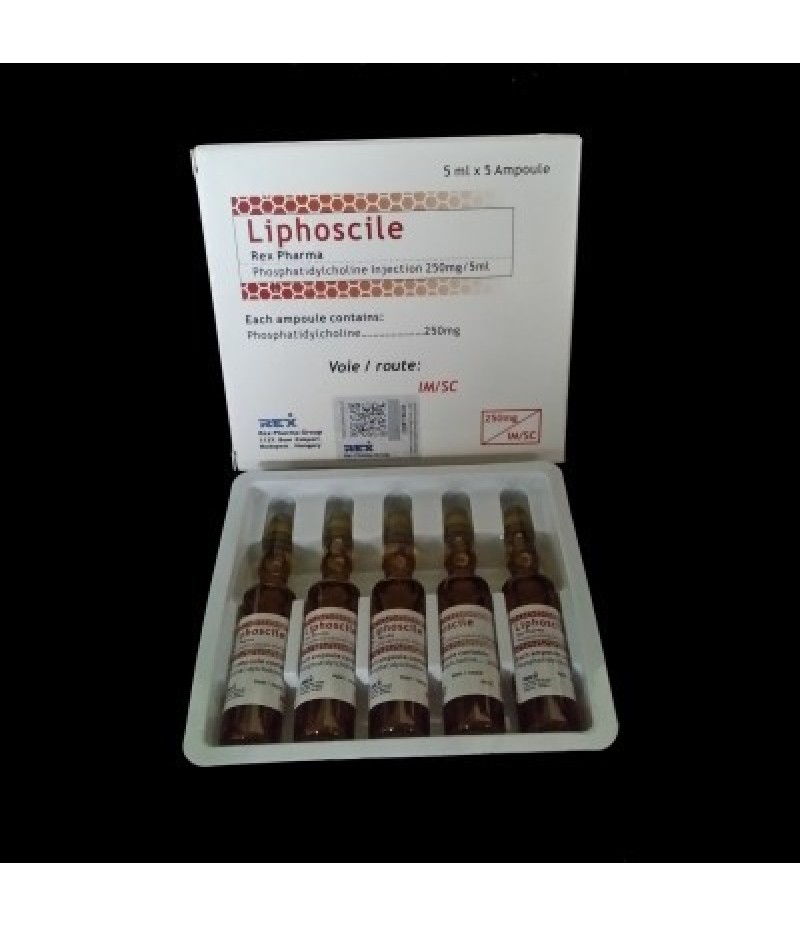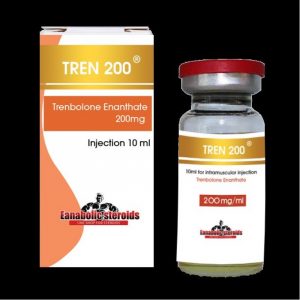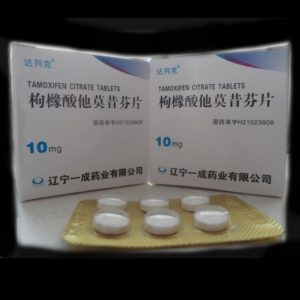1. Product name: Lipolysis injection
2. Specification: phosphatidylcholine 250mg
3. Package: 5 ampoules/box
4. Shelf life: 36 months
Description:
Phosphatidylcholine Benefits
Improve Memory
Intestinal Health
Neuropsychiatric Disorders
Skin Health
Fat Metabolism
Liver Health
Weight Loss
Phosphatidylcholine Prevents Aging! And Other Secret Uses
DETAILS
Phosphatidylcholine Injection
1. What Phosphatidylcholine Injection is and what it is used for?
2. How does Phosphatidylcholine Injection work?
3. How to Use Phosphatidylcholine Injection?
4. Possible side effects
5. How to store Phosphatidylcholine Injection?
6. Shelf life
1. What Phosphatidylcholine Injection is and what it is used for?
Phosphatidylcholine, the active ingredient of Phosphatidylcholine injection, is derived from soy bean lecithin. Chemically, the phosphatidylcholine molecule consists of a head group (phosphorylcholine), a middle piece (glycerol), and two tails (the fatty acids, which vary). The phosphatidylcholine molecules present in the tissues of organisms may vary depending on the radical of the fatty acid linked to the molecule. The injectable phosphatidylcholine is clear yellowish liquid, free from visible particles.
The Phosphatidylcholine Injection is used in:
-Body slimming: Loss weight
-Obesity treatment 2. How does Phosphatidylcholine Injection work?
The most widely recognized action mechanisms for phosphatidylcholine are those of an emulsifier and tensoactivator. Phosphatidylcholine behaves as a detergent in the subcutaneous level, causing nonspecific lysis of fat cell membranes. Phosphatidylcholine has been shown to reduce the systemic levels of cholesterol and triglycerides. 3. How to Use Phosphatidylcholine Injection?
The technique used for body slimming and obesity treatment was subcutaneous infiltration with undiluted phosphatidylcholine (250mg/5ml).The injection was injected into the fat deposit following a multi-injection pattern according to the shape of the fat deposit. The amounts of phosphatidylcholine injected into each fat deposit ranged between 5 ml and 30 ml per application according to the individual needs of the patient.
For the detailed injection parts and dosages, please see the table here below.
Injection parts Dosage per administration Abdomen/waist/hip Inject 0.7~0.8ml on a spot and move to next half an inch or a centimeter distant. Face (double chin) For those areas with small fat deposits were infiltrated at only one central point, whereas in larger areas, the injections were at equidistant points of approximately 1 cm. At each application site, 0.2ml was injected, totaling 0.2 to 5.0ml (10-250mg) per session. Other parts such as armpit, upper arm, back and thigh Adjust (mostly less than abdomen/waist/hip) injection quantity according to the obesity degree of the part to be injected.
It does not matter if there are any particles present in light inspection, just shake well before use. 4. Possible side effects
The common side effects are pain, swelling and erythema, which typically lasted for 2-3 days. Haematomas also occurred in some patients. No serious side effects or complications were noted in clinic. Using the correct technique, injecting phosphatidylcholine may be a safe and efficacious alternative to liposuction in patients objecting to surgery. 5. How to store Phosphatidylcholine Injection?
Phosphatidylcholine Injection should be contained in brown glass ampoules because it suffers degradation when expose to light. The recommend storage temperature: store under refrigeration (4℃~9℃), although there is no reference to this medicine being sensitive to temperature. Do not use Phosphatidylcholine Injection after the expiry date, which is stated on the carton. The expiry date refers to the last day of that month Medicines should not be disposed of via wastewater or household waste. Ask your pharmacist how to dispose of medicines no longer required. These measures will help to protect the environment. 6. Shelf life
36 months
1. What Phosphatidylcholine Injection is and what it is used for?
2. How does Phosphatidylcholine Injection work?
3. How to Use Phosphatidylcholine Injection?
4. Possible side effects
5. How to store Phosphatidylcholine Injection?
6. Shelf life
1. What Phosphatidylcholine Injection is and what it is used for?
Phosphatidylcholine, the active ingredient of Phosphatidylcholine injection, is derived from soy bean lecithin. Chemically, the phosphatidylcholine molecule consists of a head group (phosphorylcholine), a middle piece (glycerol), and two tails (the fatty acids, which vary). The phosphatidylcholine molecules present in the tissues of organisms may vary depending on the radical of the fatty acid linked to the molecule. The injectable phosphatidylcholine is clear yellowish liquid, free from visible particles.
The Phosphatidylcholine Injection is used in:
-Body slimming: Loss weight
-Obesity treatment 2. How does Phosphatidylcholine Injection work?
The most widely recognized action mechanisms for phosphatidylcholine are those of an emulsifier and tensoactivator. Phosphatidylcholine behaves as a detergent in the subcutaneous level, causing nonspecific lysis of fat cell membranes. Phosphatidylcholine has been shown to reduce the systemic levels of cholesterol and triglycerides. 3. How to Use Phosphatidylcholine Injection?
The technique used for body slimming and obesity treatment was subcutaneous infiltration with undiluted phosphatidylcholine (250mg/5ml).The injection was injected into the fat deposit following a multi-injection pattern according to the shape of the fat deposit. The amounts of phosphatidylcholine injected into each fat deposit ranged between 5 ml and 30 ml per application according to the individual needs of the patient.
For the detailed injection parts and dosages, please see the table here below.
Injection parts Dosage per administration Abdomen/waist/hip Inject 0.7~0.8ml on a spot and move to next half an inch or a centimeter distant. Face (double chin) For those areas with small fat deposits were infiltrated at only one central point, whereas in larger areas, the injections were at equidistant points of approximately 1 cm. At each application site, 0.2ml was injected, totaling 0.2 to 5.0ml (10-250mg) per session. Other parts such as armpit, upper arm, back and thigh Adjust (mostly less than abdomen/waist/hip) injection quantity according to the obesity degree of the part to be injected.
It does not matter if there are any particles present in light inspection, just shake well before use. 4. Possible side effects
The common side effects are pain, swelling and erythema, which typically lasted for 2-3 days. Haematomas also occurred in some patients. No serious side effects or complications were noted in clinic. Using the correct technique, injecting phosphatidylcholine may be a safe and efficacious alternative to liposuction in patients objecting to surgery. 5. How to store Phosphatidylcholine Injection?
Phosphatidylcholine Injection should be contained in brown glass ampoules because it suffers degradation when expose to light. The recommend storage temperature: store under refrigeration (4℃~9℃), although there is no reference to this medicine being sensitive to temperature. Do not use Phosphatidylcholine Injection after the expiry date, which is stated on the carton. The expiry date refers to the last day of that month Medicines should not be disposed of via wastewater or household waste. Ask your pharmacist how to dispose of medicines no longer required. These measures will help to protect the environment. 6. Shelf life
36 months
DETAILS
Phosphatidylcholine Injection
1. What Phosphatidylcholine Injection is and what it is used for?
2. How does Phosphatidylcholine Injection work?
3. How to Use Phosphatidylcholine Injection?
4. Possible side effects
5. How to store Phosphatidylcholine Injection?
6. Shelf life
1. What Phosphatidylcholine Injection is and what it is used for?
Phosphatidylcholine, the active ingredient of Phosphatidylcholine injection, is derived from soy bean lecithin. Chemically, the phosphatidylcholine molecule consists of a head group (phosphorylcholine), a middle piece (glycerol), and two tails (the fatty acids, which vary). The phosphatidylcholine molecules present in the tissues of organisms may vary depending on the radical of the fatty acid linked to the molecule. The injectable phosphatidylcholine is clear yellowish liquid, free from visible particles.
The Phosphatidylcholine Injection is used in:
-Body slimming: Loss weight
-Obesity treatment 2. How does Phosphatidylcholine Injection work?
The most widely recognized action mechanisms for phosphatidylcholine are those of an emulsifier and tensoactivator. Phosphatidylcholine behaves as a detergent in the subcutaneous level, causing nonspecific lysis of fat cell membranes. Phosphatidylcholine has been shown to reduce the systemic levels of cholesterol and triglycerides. 3. How to Use Phosphatidylcholine Injection?
The technique used for body slimming and obesity treatment was subcutaneous infiltration with undiluted phosphatidylcholine (250mg/5ml).The injection was injected into the fat deposit following a multi-injection pattern according to the shape of the fat deposit. The amounts of phosphatidylcholine injected into each fat deposit ranged between 5 ml and 30 ml per application according to the individual needs of the patient.
For the detailed injection parts and dosages, please see the table here below.
Injection parts Dosage per administration Abdomen/waist/hip Inject 0.7~0.8ml on a spot and move to next half an inch or a centimeter distant. Face (double chin) For those areas with small fat deposits were infiltrated at only one central point, whereas in larger areas, the injections were at equidistant points of approximately 1 cm. At each application site, 0.2ml was injected, totaling 0.2 to 5.0ml (10-250mg) per session. Other parts such as armpit, upper arm, back and thigh Adjust (mostly less than abdomen/waist/hip) injection quantity according to the obesity degree of the part to be injected.
It does not matter if there are any particles present in light inspection, just shake well before use. 4. Possible side effects
The common side effects are pain, swelling and erythema, which typically lasted for 2-3 days. Haematomas also occurred in some patients. No serious side effects or complications were noted in clinic. Using the correct technique, injecting phosphatidylcholine may be a safe and efficacious alternative to liposuction in patients objecting to surgery. 5. How to store Phosphatidylcholine Injection?
Phosphatidylcholine Injection should be contained in brown glass ampoules because it suffers degradation when expose to light. The recommend storage temperature: store under refrigeration (4℃~9℃), although there is no reference to this medicine being sensitive to temperature. Do not use Phosphatidylcholine Injection after the expiry date, which is stated on the carton. The expiry date refers to the last day of that month Medicines should not be disposed of via wastewater or household waste. Ask your pharmacist how to dispose of medicines no longer required. These measures will help to protect the environment. 6. Shelf life
36 months
1. What Phosphatidylcholine Injection is and what it is used for?
2. How does Phosphatidylcholine Injection work?
3. How to Use Phosphatidylcholine Injection?
4. Possible side effects
5. How to store Phosphatidylcholine Injection?
6. Shelf life
1. What Phosphatidylcholine Injection is and what it is used for?
Phosphatidylcholine, the active ingredient of Phosphatidylcholine injection, is derived from soy bean lecithin. Chemically, the phosphatidylcholine molecule consists of a head group (phosphorylcholine), a middle piece (glycerol), and two tails (the fatty acids, which vary). The phosphatidylcholine molecules present in the tissues of organisms may vary depending on the radical of the fatty acid linked to the molecule. The injectable phosphatidylcholine is clear yellowish liquid, free from visible particles.
The Phosphatidylcholine Injection is used in:
-Body slimming: Loss weight
-Obesity treatment 2. How does Phosphatidylcholine Injection work?
The most widely recognized action mechanisms for phosphatidylcholine are those of an emulsifier and tensoactivator. Phosphatidylcholine behaves as a detergent in the subcutaneous level, causing nonspecific lysis of fat cell membranes. Phosphatidylcholine has been shown to reduce the systemic levels of cholesterol and triglycerides. 3. How to Use Phosphatidylcholine Injection?
The technique used for body slimming and obesity treatment was subcutaneous infiltration with undiluted phosphatidylcholine (250mg/5ml).The injection was injected into the fat deposit following a multi-injection pattern according to the shape of the fat deposit. The amounts of phosphatidylcholine injected into each fat deposit ranged between 5 ml and 30 ml per application according to the individual needs of the patient.
For the detailed injection parts and dosages, please see the table here below.
Injection parts Dosage per administration Abdomen/waist/hip Inject 0.7~0.8ml on a spot and move to next half an inch or a centimeter distant. Face (double chin) For those areas with small fat deposits were infiltrated at only one central point, whereas in larger areas, the injections were at equidistant points of approximately 1 cm. At each application site, 0.2ml was injected, totaling 0.2 to 5.0ml (10-250mg) per session. Other parts such as armpit, upper arm, back and thigh Adjust (mostly less than abdomen/waist/hip) injection quantity according to the obesity degree of the part to be injected.
It does not matter if there are any particles present in light inspection, just shake well before use. 4. Possible side effects
The common side effects are pain, swelling and erythema, which typically lasted for 2-3 days. Haematomas also occurred in some patients. No serious side effects or complications were noted in clinic. Using the correct technique, injecting phosphatidylcholine may be a safe and efficacious alternative to liposuction in patients objecting to surgery. 5. How to store Phosphatidylcholine Injection?
Phosphatidylcholine Injection should be contained in brown glass ampoules because it suffers degradation when expose to light. The recommend storage temperature: store under refrigeration (4℃~9℃), although there is no reference to this medicine being sensitive to temperature. Do not use Phosphatidylcholine Injection after the expiry date, which is stated on the carton. The expiry date refers to the last day of that month Medicines should not be disposed of via wastewater or household waste. Ask your pharmacist how to dispose of medicines no longer required. These measures will help to protect the environment. 6. Shelf life
36 months









Reviews
There are no reviews yet.